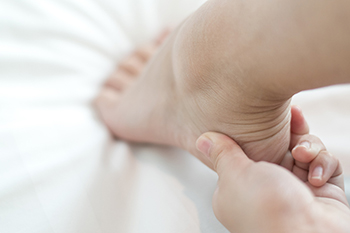
Sever's disease, also known as calcaneal apophysitis, is a common heel condition primarily affecting active children during periods of rapid growth. It occurs when the growth plate at the back of the heel becomes inflamed due to repetitive stress and tension from activities like running and jumping. This inflammation leads to heel pain, particularly during physical activity or pressure on the heel. To manage Sever's disease, it is essential to rest the affected foot and perform stretching exercises to alleviate tightness in the calf and Achilles tendon. Wearing supportive footwear with cushioning insoles can also help relieve pressure on the heel. If your child has heel pain that persists or worsens, it is suggested that you consult a chiropodist who can provide personalized care, including proper diagnosis, tailored treatment plans, and guidance on activity modification to promote healing and prevent recurrence of symptoms.
Sever’s disease typically affects young children and teenagers. If your child complains of foot pain, please consult with Paul A. Scotti, D.Ch from West Toronto Foot & Ankle Clinic Inc. . Our chiropodist will assess your condition and provide you with quality foot and ankle treatment.
What Is Sever’s Disease?
Sever’s disease, also known as calcaneal apophysitis, is an inflammation of the growth plate in the heel bone. It is typically caused by overuse due to repetitive activities such as running, jumping, and playing certain sports. This condition most frequently affects children between the ages of 8 and 14.
Symptoms
Symptoms of Sever’s disease include:
Pain in the back or bottom of the heel
Pain when the sides of the heel are squeezed
Limping or walking on tiptoes to avoid putting pressure on the heel
Difficulty running, jumping, or participating in usual activities
Fatigue
Diagnosis
Sever’s disease is diagnosed by taking a thorough medical history and performing a physical examination. Imaging studies, such as an X-ray, can help rule out other injuries like a fracture.
Treatment
Sever’s disease typically heals without any long-term complications. Treatment involves resting the affected foot by reducing typical activities, wearing orthotics to support the foot, immobilizing the affected foot, taking medications to reduce pain and inflammation, and stretching the foot.
If you have any questions, please feel free to contact our office located in . We offer the newest diagnostic and treatment technologies for all your foot care needs.
